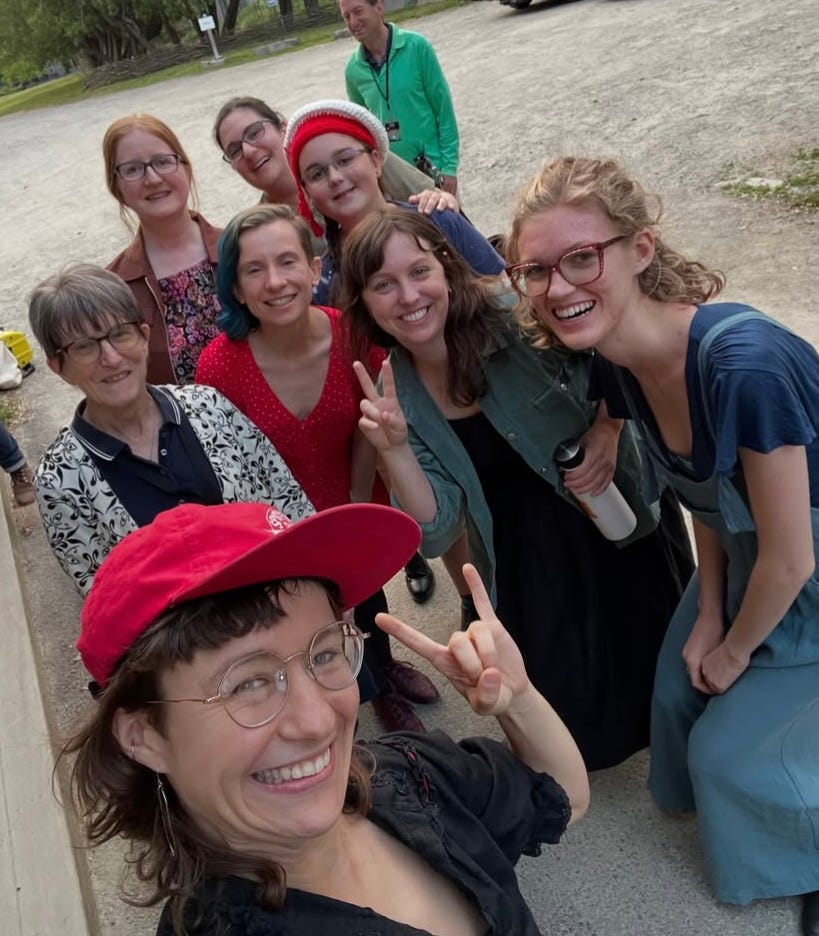I’ve got three shows happening this month before I move out of Maine, and a special bonus show in August while I make my way up to Newfoundland and stop for a night Down East. Come by, listen to some folk music, get some food, and enjoy the Maine summer in Union, Whitefield, or Liberty.
I had the most amazing time at Acadia Trad Week. Never before I have been to a traditional music camp with multiple dance teachers, let alone five (!!!). It felt practically indulgent.
I had originally signed up to do Irish and Quebecois step dance for the morning block, where your group spends two hours every day focusing on their “core” discipline, but I ended up switching to the slower paced group, which focused on Appalachian flat footing. I’m so glad I did because it was an absolute treat to spend the morning breaking down flat footing steps under the instruction of powerhouse and gem of a human Sophie Wellington.
I also got the opportunity to take sean-nós dance in the afternoon and even a tap class with legend Kevin Doyle. All the instructors of both music and dance were of incredibly high caliber, and the evening was full of fun jams and dancing. Everyone was super supportive of my physical needs. and I did my best to take care of my body, (even if it meant going to be bed early one night and missing what was later described as a “Quebecois Rave,” the FOMO from which may haunt me for the rest of my life.) By the end of the week I was physically exhausted but my spirit was soaring. Dance is important ya’ll. Just yesterday I read that dance is not allowed in some prisons and it made me want to implode.
One of the unexpected benefits of spending a week doing a close study of percussive dance was getting to observe of how the styles connect to their respective genres. Flat footing is generally very close to the ground, making a lot of sound on downbeats, and as it was explained to me, meant to“feel the pull of gravity.” Just like old time tunes, the emphasis is on the 1. Irish dance is lighter with more time spent on the balls of your feet and more jig rhythms.
A sean-nós dance class led but Kara Howgate-Mello who runs a dance studio in Central Massachusetts.
Tap is a beautiful melding of all these traditions, influenced by flat footing, indigenous dance traditions, Irish, vaudeville, and beyond. When I got home I nerded out and read this fascinating article on the evolution of tap that goes into way more detail than I have time or space for here, but covers all these dance styles and more.1
Kevin Doyle step dancing with taps to the hornpipe “Rights of Man”

Also if you haven’t already, check out this amazing documentary about flat footing traditions:
I left feeling so inspired and maybe someday I’ll try dancing and playing banjo at the same time! It will be a while until I even consider attempting that in public though!! :)
Until Next Time,
Kate



